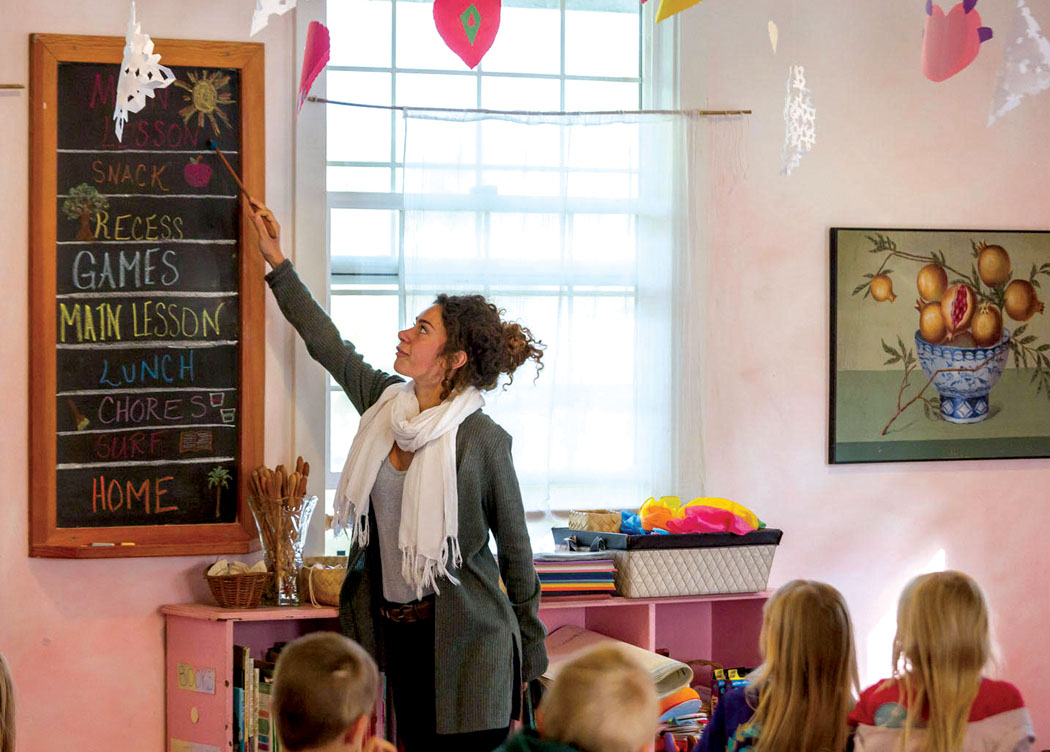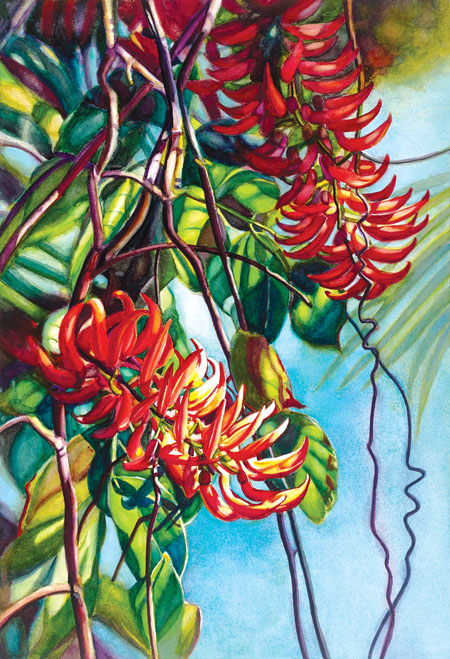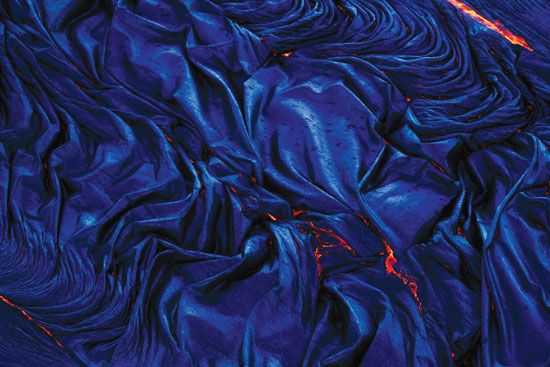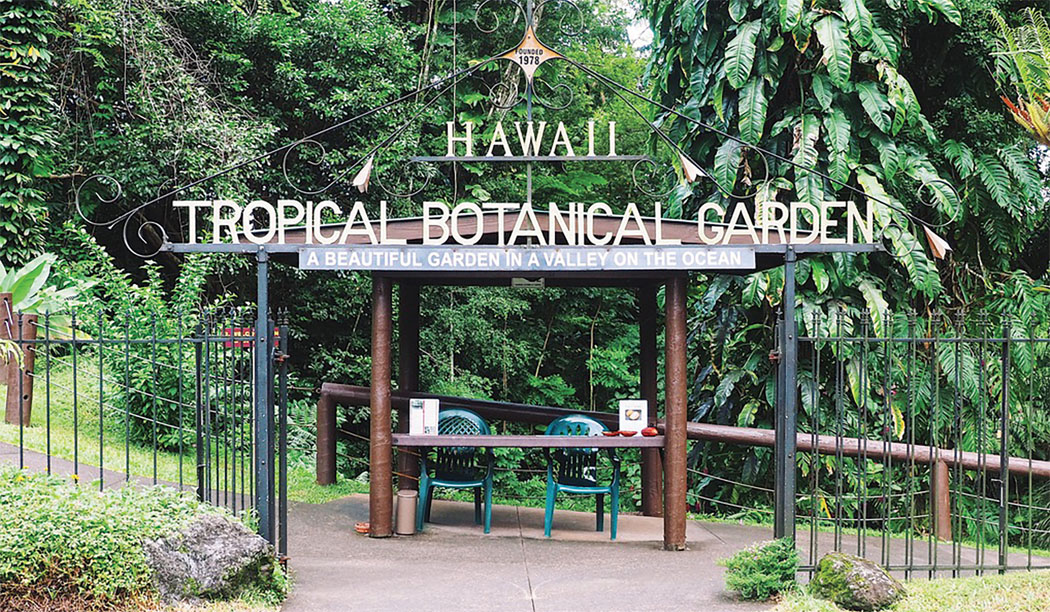
Hawaii Tropical Botanical Garden: Restoring and Protecting Hawai‘i Island’s Biodiversity

By Brittany P. Anderson
The isolation of Hawai‘i Island, surrounded by the Pacific Ocean and born of volcanic lava flows from the ocean’s floor, shaped the biodiversity of the island. Our unique position makes the Island of Hawai‘i one of the most biologically diverse areas on the planet. As outer islands struggle with declining numbers of species, Hawai‘i Island maintains impressive numbers in the varieties of birds, insects, and plants throughout its 11 of the world’s 13 climate ecosystems. Large portions of these species are found only on the Hawaiian Islands.
Biodiversity increases ecosystem productivity, where each species has an important role to play. Living in such an exceptional and distinctive ecosystem is a delicate balance. Between Hawaii Tropical Botanical Garden and a seed saver movement, a shift to preserve and increase awareness of diversity is underway on Hawai‘i Island.
A Family Legacy
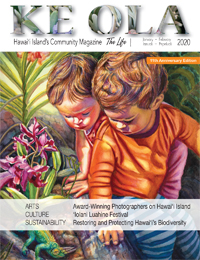
There is a wet coolness of Onomea Bay, located on the four-mile scenic route off of Route 19 in Pāpa‘ikou. Countless travelers escape the sun’s heat under the tropical canopy leading to Hawaii Tropical Botanical Garden. The attraction’s trails highlight stunning plant specimens set to the peaceful soundtrack of the ocean dancing with Onomea’s rocky shore.
In 1977, Dan Lutkenhouse purchased the property and began hand clearing the densely vegetated gulch. His vision of preserving the beauty of the valley fueled his passion. Dan amassed an impressive list of rare and threatened tropical species from all over the world and personally selected each location for the plantings.
Dan and his wife Pauline opened the Hawaii Tropical Botanical Garden to the public in 1984. The botanical garden boasts approximately 2,500 diverse species of plants—some of them only living in conservation space, otherwise they’d be extinct. The Lutkenhousesʻ desire to preserve rare tropical plants extended to the entire Onomea Bay area.
Before their passing, Dan and Pauline established a 501c3 nonprofit corporation and took steps to ensure their land, now more than 100 acres, will never be sold or commercially developed.

Today, carrying on the legacy, their son Dan Jr. is shifting the organization’s work to sustainability. The Hawaii Tropical Botanical Garden will be changing its name to Hawaii Tropical Bio Reserve and Garden to reflect their new direction better. The Hawaii Tropical Bio Reserve and Garden will focus on the conservation of biodiversity and create a sustainability education center.
“We will be creating native species gardens and be a living classroom,” said Drew Daniels, digital marketing manager of Hawaii Tropical Botanical Garden. “There are plans for digital education and an innovation incubator space. Since we have a condensed area with multiple mini-ecosystems, it’s a great place to serve as an education hub,” Drew continued.
They are also working to enhance what ecologists refer to as “the edge effect.” The edge effect is an ecological theory that describes how there is greater diversity of life in the area where the edges of two adjacent ecosystems overlap. By focusing on this edge area of the gardens, greater variety of plants, insects, and animals flourish.
Significant numbers of tropical and endangered plant species live on in the most extensive collection of plant types anywhere, including gingers, orchids, palms, aroids, and heliconia, while future efforts to educate the public in sustainability are underway. Combining the family legacy of preservation with a modern twist brings a fresh outlook to the biodiversity of Onomea Bay.
Seeds of Change
Traditionally, farmers saved seeds from their harvests to plant for the next season. This practice allowed for the natural adaptation of plants to their climate, soils, and pest pressures. After the boom of the seed industry in the early 1900s, seeds began being mass-produced, which started chipping away at genetic variety. According to the Plant Genetic Resources Project of the Rural Advancement Fund, Inc., between 1903 and 1983, we lost 93% of the variety in food seeds.
The loss of heirloom seeds contributes to the erosion of plant genetic material that is essential to sustaining life. Biological diversity in plants ensures food security, and the Hawai‘i Seed Growers Network is working to improve, increase, and promote plant biodiversity on Hawai‘i Island.
The Hawai‘i Seed Growers Network’s goal is to produce seeds that are locally grown and naturally adapted to Hawai‘i’s diverse microclimates to increase the success of farmers and gardeners.
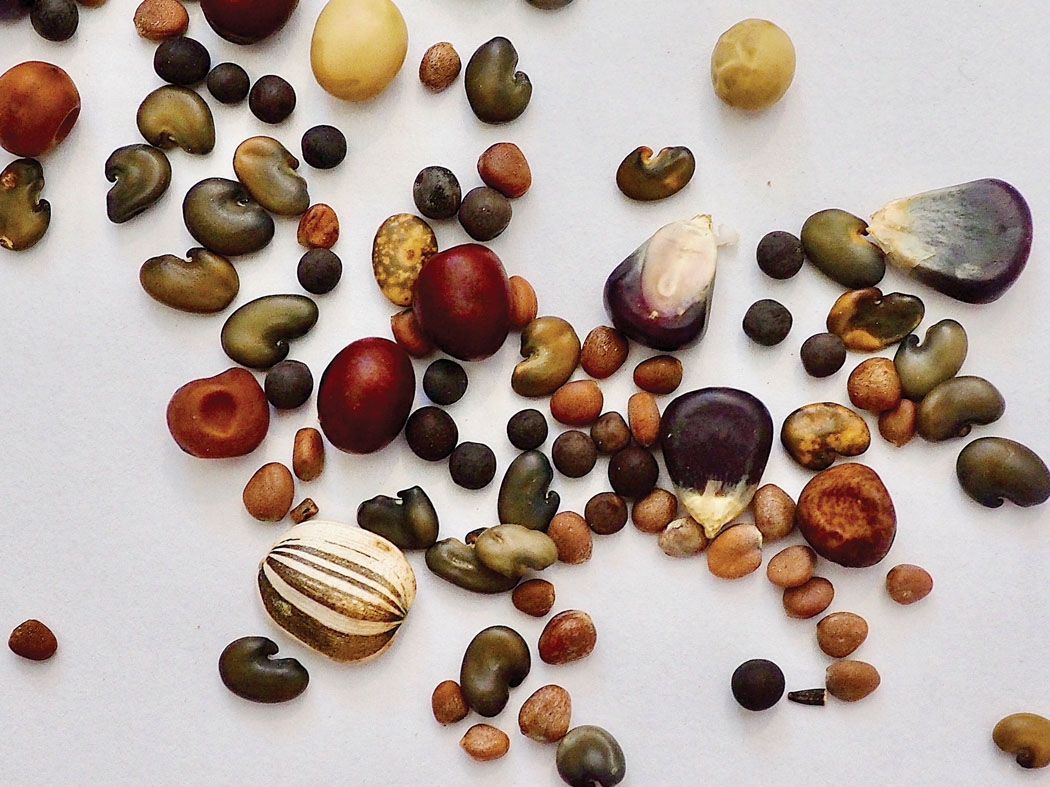
Nancy Redfeather is a powerhouse when it comes to enhancing the biodiversity of local gardens across Hawai‘i Island. Founding member of the Hawai‘i Seed Growers Network and the Hawai‘i Public Seed Initiative, Nancy has been instrumental in building food self-reliance on the island.
From her upland Kona farm, Kawanui Farm, Nancy said, “For us to bring seeds back and offer that for the people of Hawai‘i is revolutionary.” She began saving seeds in 1994 after attending a class by renowned biointensive agriculturist and author John Jeavons. Nancy reflects on the event as a pivotal moment, “He said that 97% of all [food crop] varieties grown in the United States would be extinct by 2005. That was hard to fathom. All the different things that my ancestors ate and grew would be gone. That is the biodiversity base of the entire country,” she continued, reliving the painful realization.
Since then, she’s worked with a network of growers across the state to bring more locally adapted vegetables to the marketplace, testing for seasonal vigor and improving the seed quality with every planting.
“The plant knows what to do—they acclimatize every time you grow it,” she said. Depending on the variety, it could take from six months to three–five years to make a plant ready for the marketplace.
Seeds have a lifespan depending on how they’re grown, dried, and processed. Storing seeds appropriately is also a key factor in successful growing. Nancy recommends keeping seeds in a cool, dry, dark place, and a refrigerator is best for storing seeds in Hawai‘i.
“The more diversity I have, the healthier everything is. Plants have a complex web that, without the complexity, is not as healthy,” Nancy said thoughtfully of the importance of biodiversity at her farm.
The seed savers offer an online website that makes purchasing these naturally adapted seeds easy. In fact, you donʻt have to have a green thumb to have a positive impact on our island’s biome.
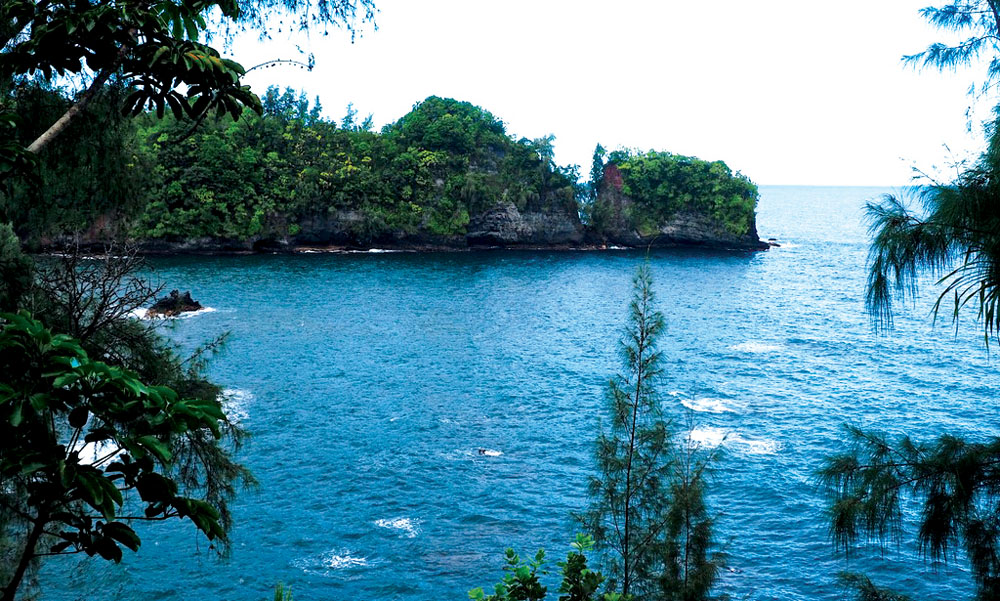
Plant the Thought
Staying on marked trails and reducing plastic waste are small but mighty steps that both visitors and residents of Hawai‘i Island can make to limit their impact on the island’s biodiversity, above and below sea level.
While enjoying the park system and our network of trails, staying on the marked path is vitally important to the ecosystem. Staying on pathways avoids damaging precious natural and cultural resources like endangered plants, animals, and insects. Avoid spreading diseases and invasive species to fragile island habitats by using shoe cleaning stations, whenever available. When you stay on designated trails, you help preserve the diversity of these beautiful areas for future generations.
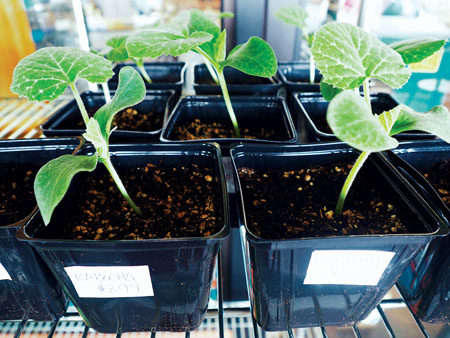
Single-use plastics are one of the biggest threats to marine life. Hawai‘i Island’s shoreline boasts rich diversity in coral, fish, and marine mammals, which are all threatened by discarded plastics. Marine debris impacts biodiversity in multiple ways, mostly through entanglement, ingestion, and ecosystem destruction.
The Convention on Biologic Diversity reports that “all known species of sea turtles, about half of all species of marine mammals, and one-fifth of all species of sea birds were affected by entanglement or ingestion of marine debris.” And the majority of marine debris? Single-use plastics, and plastic fragments. Reducing the use of plastic bags, bottles, and containers makes a lasting positive impact on life under the sea.
Diversity in plants is critical for food production on the Island of Hawai‘i. Locally adapted seeds are more resilient to our region, which means we have a more secure food system, but we have to keep growing. As our climate changes, plants can adapt too, as long as there are people dedicated to cultivating local seeds.
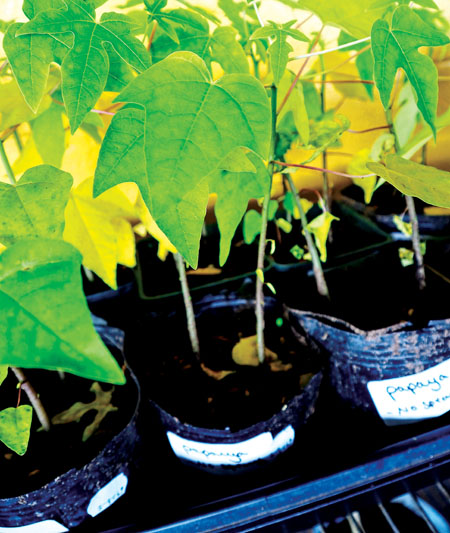
Shifting the paradigm of the organization, Hawaii Tropical Botanical Garden is preparing to be a resource for the island and abroad—spreading knowledge like seeds. Through its sustainability initiatives, the Bio Reserve will preserve the diversity of Onomea Bay’s ecosystems and be a model for communities worldwide.
We all are responsible for protecting and promoting biodiversity, be it through participating in large movements like seed saving, or small gestures like forgoing plastic bags at the grocery store. Hawai‘i Island’s coastline ecosystems are suffering from tragic losses due to marine debris. The Hawaiian monk seal and green sea turtle are vulnerable to unnecessary plastic rubbish polluting our waterways.
The biodiversity of Hawai‘i Island is what makes it so unique—diversity in its ecosystems, plants, animals, and people. Each distinct piece woven together forms the tapestry that draws people from all over the world to experience Hawai‘i Island year after year. It is through the rich diversity we find strength and resilience. When we work to protect our biodiversity, we can ensure it is around for years to come. ❖
For more information: htbg.com, hawaiiseedgrowersnetwork.com
Mahalo Ahualoa Farms–Local Agriculture Story Sponsor
